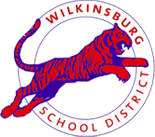Music
|
Pre-K MUSIC |
|
|
OBJECTIVE: |
Pre-K music aligns with the PA Arts and Humanities Standards and the National Music Standards. The objective of the Music Class is to provide the students with the knowledge and skills related to the elements of music, individual and group performances, understanding the connection of music to history and culture, and understanding of how music connects to other disciplines. The overarching goal is to help the student to develop a love of music and acquire skills that can be carried over into other areas of their lives. Music Education is an aural art form that satisfies the human need to respond to life experiences through singing, listening and/or playing an instrument. |
|
DURING THE SCHOOL YEAR STUDENTS WILL LEARN: |
|
|
Creating |
|
|
Performing |
|
|
Responding |
|
|
Connecting |
|
|
What Students Will Do Throughout the School Year |
|
Students will participate in a variety of musical experiences throughout the year. All students will to the best of their ability be able to:
|
|
Kindergarten MUSIC |
|
|
OBJECTIVE: |
Third grade music aligns with the PA Arts and Humanities Standards and the National Music Standards. The objective of the Music Class is to provide the students with the knowledge and skills related to the elements of music, individual and group performances, understanding the connection of music to history and culture, and understanding of how music connects to other disciplines. The overarching goal is to help the student to develop a love of music and acquire skills that can be carried over into other areas of their lives. Music Education is an aural art form that satisfies the human need to respond to life experiences through singing, listening and/or playing an instrument. |
|
During the school year the students will learn: |
|
|
Creating |
|
|
Performing |
|
|
Responding |
|
|
Connecting |
|
|
What Students Will Do Throughout the School Year |
|
Students will participate in a variety of musical experiences throughout the year. All students will to the best of their ability be able to:
|
|
1st Grade Music |
|
|
OBJECTIVE: |
Fourth grade music aligns with the PA Arts and Humanities Standards and the National Music Standards. The objective of the Music Class is to provide the students with the knowledge and skills related to the elements of music, individual and group performances, understanding the connection of music to history and culture, and understanding of how music connects to other disciplines. The overarching goal is to help the student to develop a love of music and acquire skills that can be carried over into other areas of their lives. Music Education is an aural art form that satisfies the human need to respond to life experiences through singing, listening and/or playing an instrument. |
|
During the school year the students will learn: |
|
|
Creating |
|
|
Performing |
|
|
Responding |
|
|
Connecting |
|
|
What Students Will Do Throughout the School Year |
|
Students will participate in a variety of musical experiences throughout the year. All students will to the best of their ability be able to:
|


